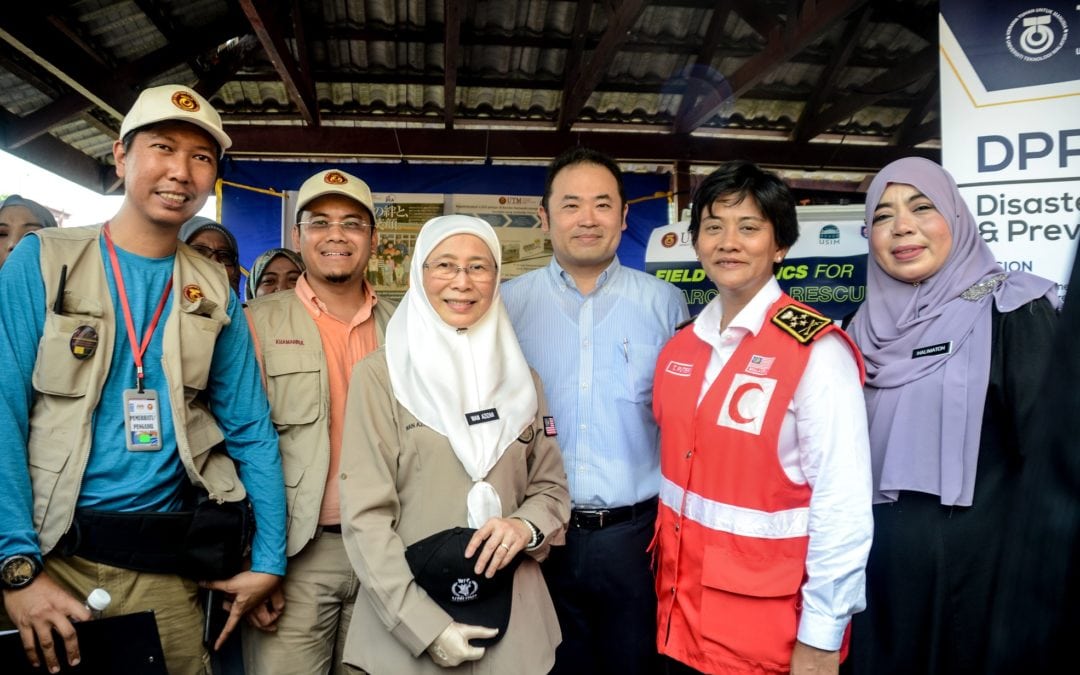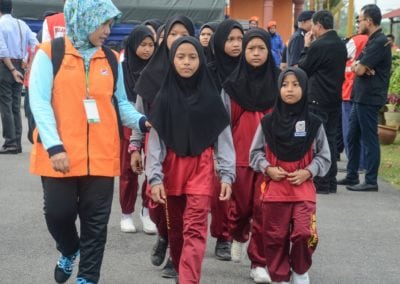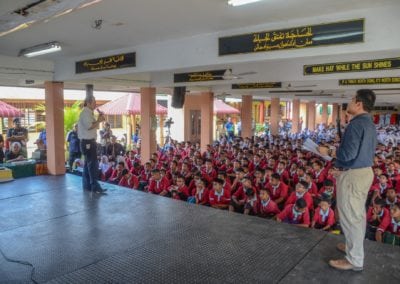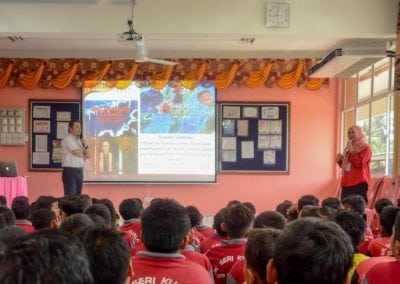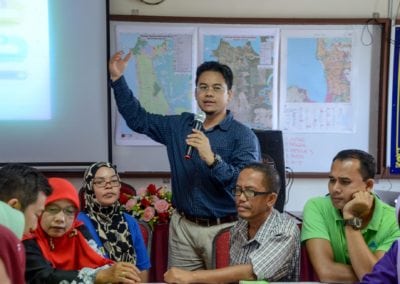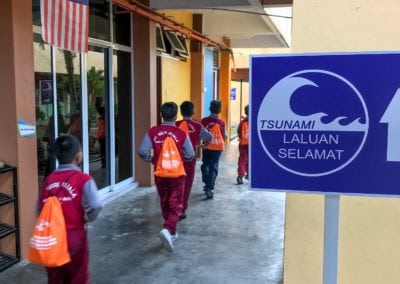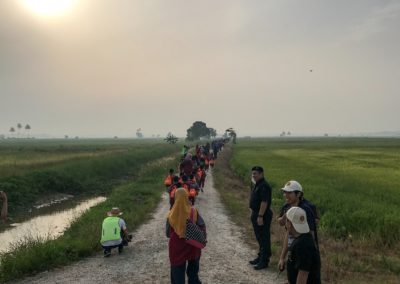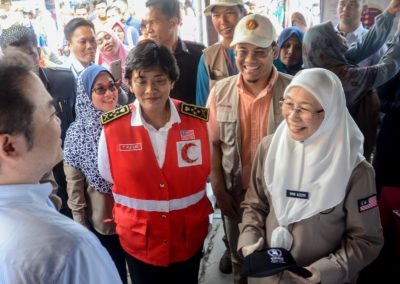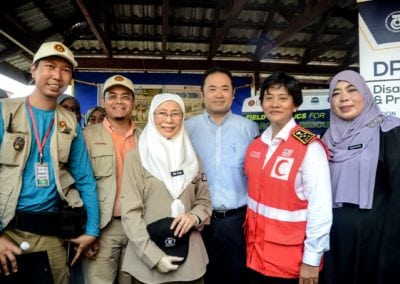On 6-7 August, DPPC members, Dr. Khamarrul Azahari Razak, Dr. Aznah Nor Anuar, Dr. Nor Eliza Alias and Dr. Shohei Matsuura joined the National Disaster Management Agency (NaDMA) in implementing a series of program that included tsunami evacuation exercise with residents of Kota Kuala Muda, Kedah that experienced the 2004 Indian Ocean Tsunami.
Originally planned as one of the project components of UNDP’s project, “Strengthening School Preparedness for Tsunami in Asia and the Pacific,” funded by the Japanese government, the program consisted of public lectures, risk assessment exercise, evacuation drill and community consultation meetings.
On 6 August, Dr. Matsuura gave 2 public talks to local government, community leaders and school children on the Japanese experience of tsunami response, especially from the 2011 East Japan Earthquake and Tsunami. He explained on how to anticipate tsunami damages beyond what is simulated and even 40-50cm waves can drown people, particularly children.
Dr. Khamarrul led the risk assessment exercise by incorporating the Disaster Imagination Exercise (DIG) used in Japan. Together with community leaders and NGOs, identified high-risk areas as well as priority preparedness actions that the communities need to take in order to improve response to future tsunami events.
On 7 August, Dr. Aznah and Dr, Eliza took part in providing technical inputs to the evacuation drills conducted by NaDMA and the local schools. Although there are several areas to be improved, they concluded that the exercise was organized well and that the drills need to be followed up by NaDMA, but putting more emphasis on empowering the local government and communities.
MJIIT opened a booth to introduce DRM practices from Japan (specifically for tsunami) and research activities that are currently being implemented by UTM. Deputy Prime Minister, Datuk Seri Wan Azizah, visited the booth expressing interest in MJIIT’s professional training and hands-on research in DRR for Malaysia.
DPPC plans to continue to support DRM agencies, including NaDMA, through a transdisciplinary approach that links science with policy/action on the fieldK and various stakeholders from different sectors in DRM.
